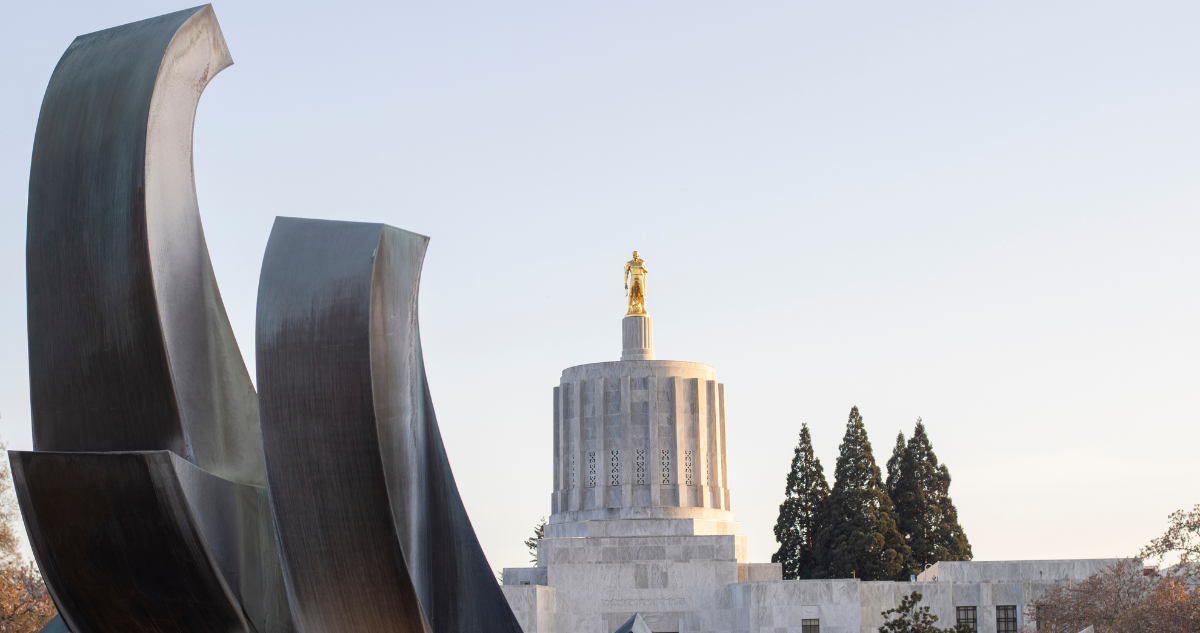Medicaid is the nation’s major public health program for low-income Americans, financing health and long-term care services for more than 50 million people.
Medicaid was created along with Medicare on July 30, 1965 to improve the health of impoverished and elderly Americans. Federal and state governments jointly finance Medicaid and states administer the program within broad federal guidelines. Currently, the federal share of total Medicaid spending in Oregon is 60%, with the state contributing the remaining 40%.
Download a copy of this fact sheet:
Medicaid Plays a Crucial Role in the Health of Oregonians (PDF)
Related materials:
Medicaid Provides Health Coverage to Thousands of Oregonians
In 2002, Medicaid provided health insurance for 637,000 Oregonians including 44,000 elderly persons, 68,000 people with permanent disabilities, 263,000 children and 262,000 poor adults including pregnant women. Except for long-term care, Medicaid services in Oregon are commonly provided through the Oregon Health Plan.
Most Medicaid beneficiaries have incomes below the poverty line ($16,090 for a family of three in 2005). Because of their low incomes, people eligible for Medicaid are at greater risk of poor health, and in many cases, their health problems have contributed to their low-income status. Because low-income working families often do not have access to health insurance through their jobs, Medicaid is a key source of coverage. Nationally, two-thirds of all Medicaid enrollees are in working families and one in three children in rural areas relies on Medicaid for their health care needs.
Medicaid Provides Essential Health Care Services
Medicaid in Oregon provides preventive care, primary care, acute care, long-term care, and prescription drugs. Through its “Early and Periodic Screening and Diagnostic and Treatment” program (EPSDT), Medicaid provides children with the preventive care and treatment they need to reach their optimal health and development.
Medicaid is a Mainstay of Oregon’s Health Care System
Hospitals, nursing homes, community health clinics and mental health centers all depend on Medicaid to keep their doors open. In 2002, Medicaid payments infused Oregon’s hospital system with nearly $271 million. Medicaid also aids hospitals serving a disproportionate share of low-income, uninsured patients. Medicaid is the primary payer for 61 percent of Oregon’s certified nursing facility residents. Medicaid pays for over one-third of the births in Oregon.
Medicaid Provides Essential Services to Elderly Persons and People with Disabilities
About 70 percent of Medicaid spending goes toward care for low-income senior citizens and people with disabilities. For senior citizens, Medicaid fills gaps in coverage left by Medicare, such as the lack of long-term care. Medicaid is the nation’s largest funding source for nursing home care. Oregon has pioneered innovative approaches to improving and diversifying long-term care and caring for frail seniors in their own homes rather than in nursing homes through Medicaid. In addition, Medicaid helps make medical care more affordable and accessible for millions of low-income seniors by paying the premiums, deductibles, and coinsurance charged under Medicare.
Medicaid Covers People Who Can’t Get Private Coverage at Any Price
Thousands of Oregonians who have permanent disabilities are unable to work and are therefore unable to secure employer-sponsored health insurance. Their severe health conditions also make it impossible for them to obtain individual health insurance. Since they are effectively shut out of the private health insurance market, Medicaid can be their only health insurance option. For these individuals, Medicaid coverage provides access to critical health care, including new medical technologies that can improve their health and well-being.
Medicaid Covers People During Times of Growing Need
Medicaid is designed to cover more low-income people when need increases, such as during the recent economic downturn when many Oregonians lost employment-based coverage. Like programs such as Food Stamps, Medicaid provides protection during downturns that both assists vulnerable people and boosts the weakened economy.
Medicaid Supports a Healthy Oregon Economy
In 2005, Oregon will spend nearly $3.0 billion through the Medicaid program. Of this, the federal government will contribute nearly $1.8 billion. This investment stimulates business activity and creates jobs. Because Medicaid spending has a multiplier effect, each $1 million that Oregon invests in Medicaid results in more than $3.1 million in new business activity.
Medicaid Provides Medical Care at a Lower Cost than Private Insurance
Medicaid provides health care at a lower per-person cost than private health insurance. Per person costs of Medicaid have been rising more slowly in recent years than the per capita costs of private insurance. Costs of health care for children are 10 percent lower than they would be under private insurance; for adults costs are 30 percent lower. The administrative costs of Medicaid are about half as large as they are under private insurance.
To the extent that Medicaid expenditures are rising, it is due to factors that are affecting all sectors of health care, including private health insurance and Medicare. Health care cost increases are being driven by advances in medical technology and increases in health care usage. These factors can improve health status and prolong life, but also increase costs. The aging of the population is also pushing us down the path of higher health care costs, since health care needs and costs are greater, on average, for older people than for younger ones.
Medicaid Improves the Health of Low-Income Americans Research has found that:
|
Sources:
Ku, Leighton, Medicaid: Improving Health, Saving Lives, Center on Budget and Policy Priorities, July 19, 2005.
Families USA: Medicaid Cuts Are Bad Medicine – Oregon. January 2005.
Kaiser Commission on Medicaid and the Uninsured: The Medicaid Program at a Glance. January 2004.
Posted in Health Care.
More about: medicaid







